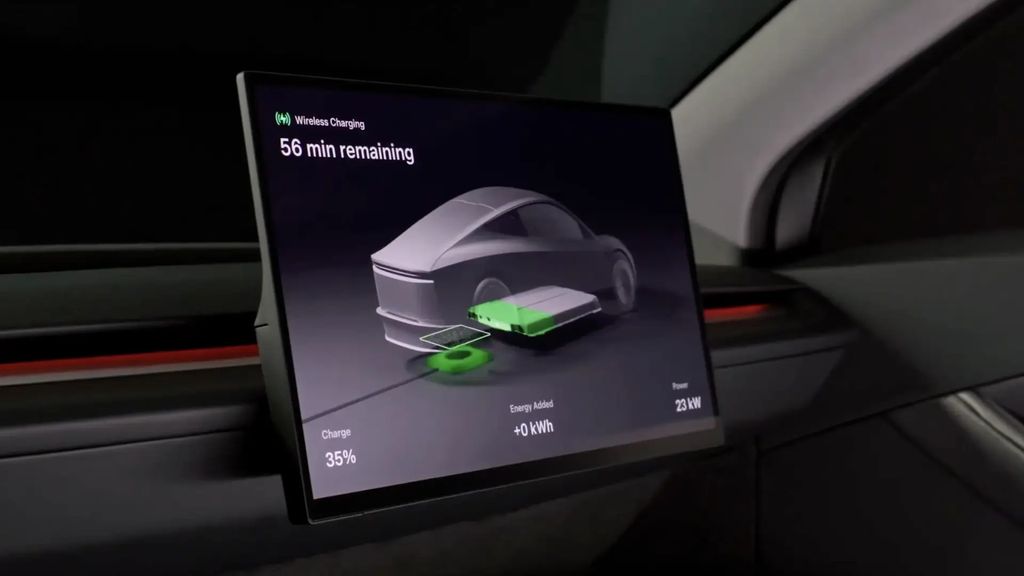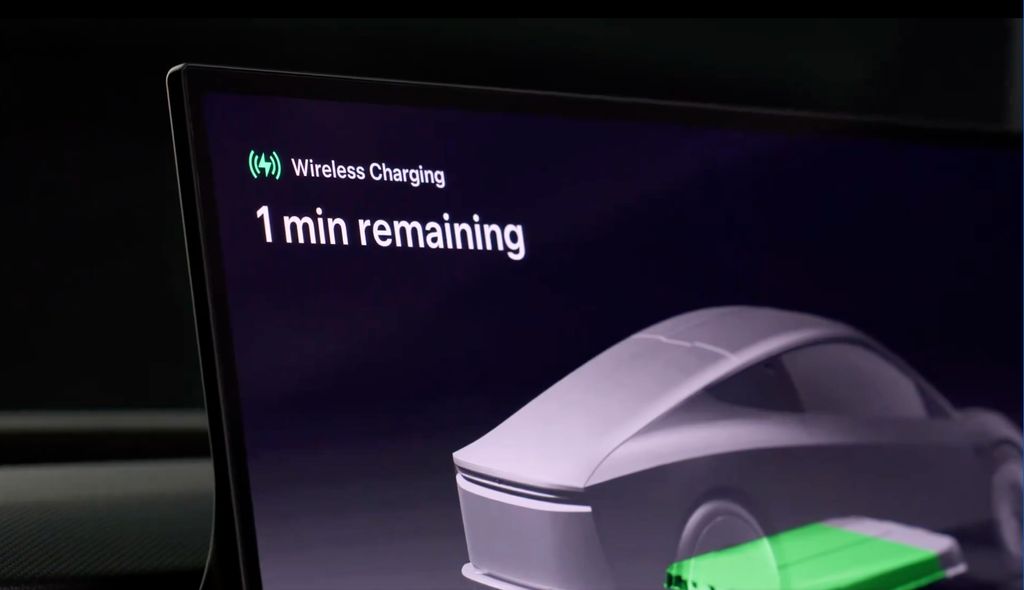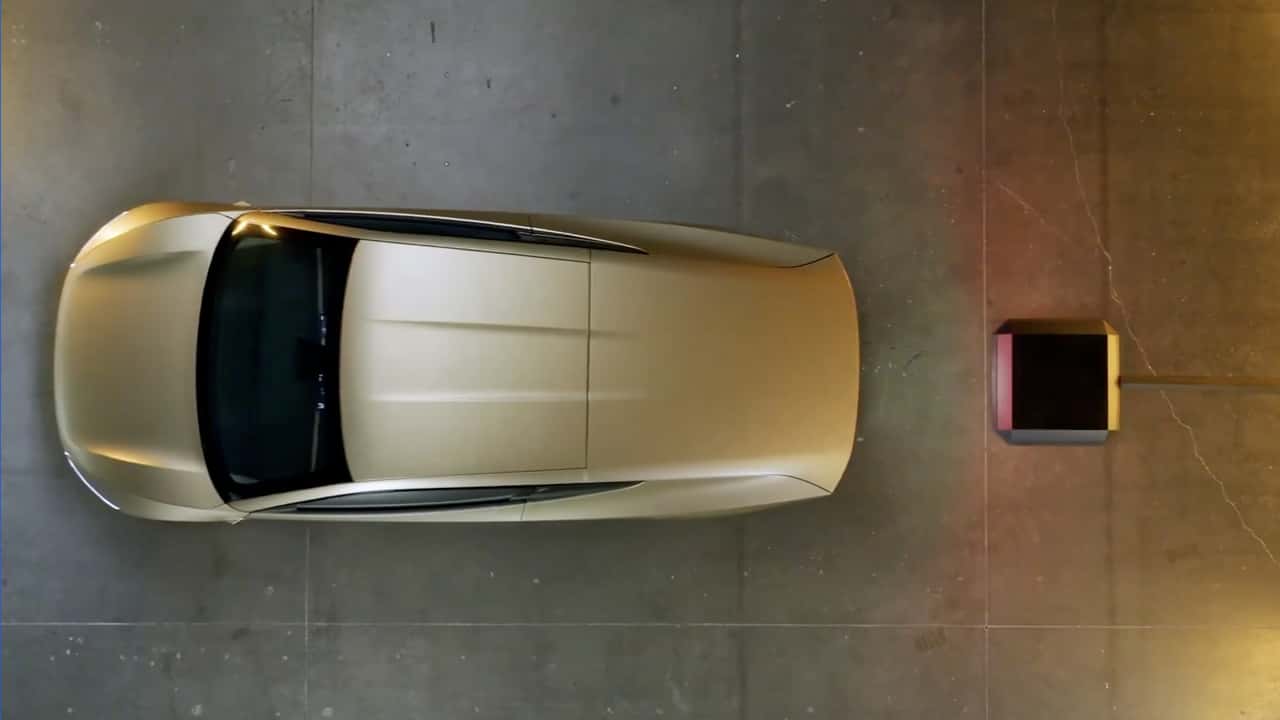- The Tesla Cybercab won’t have a charging port; instead it will charge wirelessly.
- The Cybercab has a rumored target of 200 miles of range, from an average efficiency of 5.5 miles per kWh.
Last week, when Tesla showed off the Cybercab’s prototype concept design, CEO Elon Musk was clear that it wouldn’t have a charging port. Instead, it would charge wirelessly—a cool idea, but no one was sure exactly how that would work. We had some idea based on a leaked video, but now we’ve got a high-def look at how its wireless charging works.
Or might work, we should say. As with everything Tesla-related, there are a lot of big promises and “we’ll see what happens” moments. But this new video shows off a very interesting concept.
It looks like the Cybercab’s charging equipment is located in the rear of the car, below the trunk, and (presumably) near the rear axle of the car. On the ground, lies a wireless charging square, that effectively doesn’t look all that different from what you’d use on a cellular device. The car seamlessly starts charging, at speeds of 25 kW.

Of course, like any Tesla technical showcase, it’s never entirely clear what’s a functional prototype, and what’s just a proof-of-concept demo of what the brand’s currently working on. It’s not clear if there’s any sort of physical apparatus or part that needs to be touching the charging pad, either. Is there a plate or piece of the Cybercab that needs to be touching the charging pad? It’s not clear, and the video doesn’t show that.
Also, Tesla famously doesn’t have a press office, so there’s no way I can really ask, either. Still, if this is true, 25 kW wirelessly is pretty dang impressive, considering that wireless charging tends to be more lossy compared to a wired physical connection. No details on the amperage of the charger itself, though.
Interestingly, the video could give us hints as to what battery equipment the Cybercab is working with, and what range it could hold. The animation showed that the Cybercab started charging at 35%, and quickly rocketed up to what was likely its maximum of 25 kW. The screen said that the car would finish charging in 56 minutes.

If we do some fuzzy math and assume that the Cybercab’s charging target was 100%, we’d guesstimate that the Cybercab’s battery is 35 kWh. That’s further somewhat verified by Top Gear, who reported that Tesla was targeting a range of 200 miles, and an efficiency rating of 5.5 kWh per mile. If we divide 200 miles by 5.5, we’re at 36.3, which is right on track for the 35-36 kWh we’ve guesstimated.
That doesn’t sound huge, but given the fact this thing is meant to be a purpose-built EV self-driving cab where its logistics and ride would be managed by a computer, 35 kWh is probably enough battery for the short journeys it will likely do.
Of course, like every Tesla demo and video we’ve got to approach the situation with an abundance of caution. Demos, screens and slick animations are easy to generate by any designer or artist in the automotive industry worth their salt. Whether or not any of this ever comes to market, well, we’ll just have to wait and see.
Contact the author: kevin.williams@insideevs.com
Tesla’s Cybercab Wireless Charging Video May Tell Us A Lot
Tesla, the innovative electric car company led by Elon Musk, has recently released a video showcasing the wireless charging capabilities of its upcoming Cybercab model. This video may hold valuable insights into the future of electric vehicle technology and the potential for widespread adoption of wireless charging systems.
The video highlights the seamless and convenient charging process for the Cybercab, which utilizes an inductive charging pad installed in the ground. This technology allows the vehicle to park over the pad and automatically begin charging without the need for any physical connection. This not only eliminates the hassle of plugging in a charging cable but also reduces wear and tear on charging ports and cables over time.
One of the most significant advantages of wireless charging is its potential to revolutionize the way people think about electric vehicle ownership. With wireless charging infrastructure in place, drivers no longer need to worry about finding a charging station or waiting for their vehicle to charge. Instead, they can simply park their car at home, work, or any other designated charging spot and let the vehicle charge automatically.
Furthermore, wireless charging could help improve the accessibility of electric vehicles for individuals living in apartments or areas without dedicated charging stations. By installing inductive charging pads in public parking lots, shopping centers, and other common areas, electric vehicle owners can easily charge their vehicles while going about their daily activities.
The release of this video also raises questions about the potential for Tesla to expand its wireless charging technology beyond the Cybercab model. Could we see wireless charging options for other Tesla vehicles in the future? How will this technology be integrated into existing charging infrastructure? These are important questions that will likely be addressed as Tesla continues to develop its electric vehicle lineup.
In conclusion, Tesla’s Cybercab wireless charging video may tell us a lot about the future of electric vehicle technology. The convenience and ease of wireless charging could significantly impact the adoption of electric vehicles and pave the way for a more sustainable transportation system. As Tesla continues to innovate in this space, it will be exciting to see how wireless charging technology evolves and becomes more widespread in the coming years.

